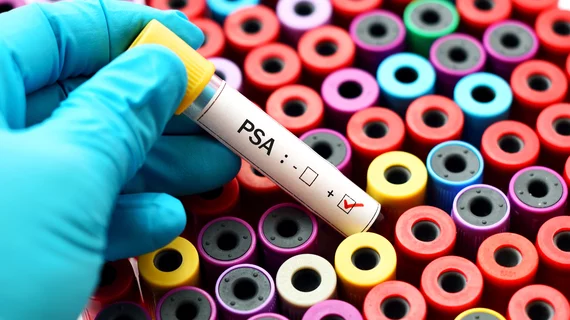Hybrid PET/MRI tops multiparametric MRI for detecting clinically significant prostate cancer
Hybrid PET/MR scanning with a federally approved imaging tracer improves prostate cancer detection compared to using multiparametric MRI alone.
Top urology associations now recommend men with elevated prostate-specific antigen levels undergo mpMR imaging prior to biopsy. And while research has shown PSMA-PET/MRI may better detect cancer, all prior analyses have tested patients already diagnosed with the disease rather than those who have yet to undergo a biopsy, experts explained in Radiology.
Comparing multiparametric MRI and Gallium 68-labeled PSMA-PET/MRI, the latter bolstered providers’ ability to spot cancer-positive patients, authors reported Tuesday, Aug. 31. This proved particularly true for PI-RADS 3 lesions, which have a substantial risk of turning into cancer.
“There is an ongoing clinical need to improve the specificity of imaging for detecting clinically significant prostate cancer (CSPC),” David Margel, MD, of Rabin Medical Center’s Division of Urology in Tel Aviv, Israel, and co-authors wrote. “In this prospective trial, we found that the specificity of 68Ga prostate-specific membrane antigen PET/MRI was higher than that of multiparametric MRI (76% vs 49%, respectively),” they added.
For their study, the authors included 99 men with PSA levels of 2.5-20 ng/mL who underwent 68Ga-PSMA PET/MRI, including multiparametric MRI sequences, between June 2019 and March 2020. Two rads used PI-RADS version 2.1 to independently assess the images.
Overall, 78 men had biopsy-confirmed prostate cancer. PET/MRI with 68Ga offered higher specificity while maintaining a similar sensitivity compared to multiparametric MRI (88% vs. 92%, respectively).
And given PET/MRI’s superior specificity for PI-RADS 3 lesions (86% vs. 59%) the authors said hybrid imaging could slash the number of biopsies performed while also maintaining detection rates.
Importantly, 68Ga-PSMA-11, which was approved by the FDA on December 1, 2020, for certain indications, but has not yet been assigned a Healthcare Common Procedure Coding System A-code for billing.
“This study shows that functional imaging better evaluates true cancer extent than does anatomic imaging alone, positively impacting prostate cancer diagnosis and potentially leading to more effective treatment options,” Hadyn T. Williams, MD, and Thomas L. Estes, MD, both with the Medical College of Georgia in Augusta, wrote in an editorial published alongside the study.
Read the full study published in Radiology here and the accompanying editorial here.

